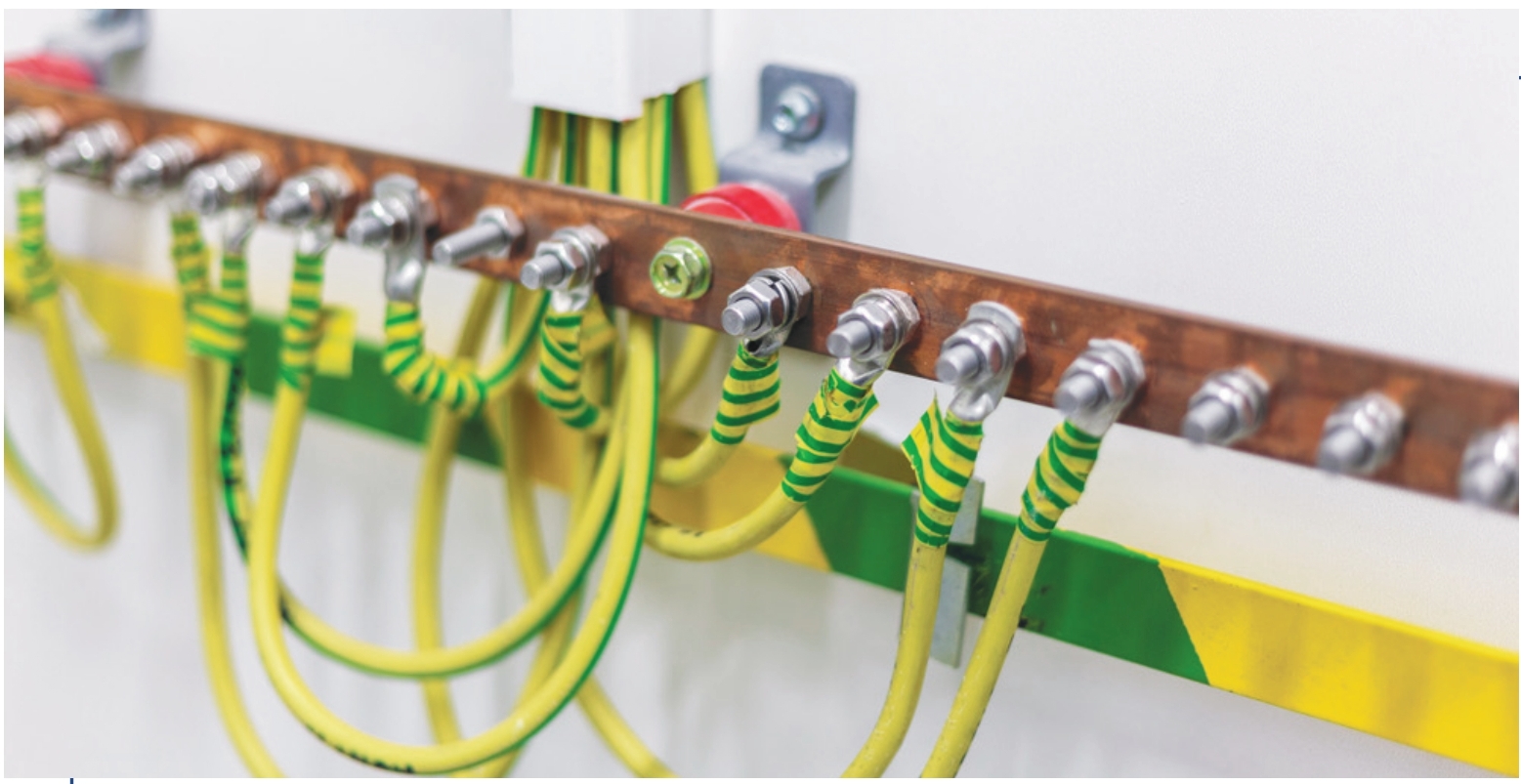
Equipotentialization and Earth Systems
Equipotentialization is a process of creating an electrical environment where all points are at the same potential, or voltage level, to reduce the risk of electrical damage. It is important part of lightning protection and surge protection systems, especially in areas where sensitive equipment or human-life are involved. It helps minimize any differences in electrical potential across a structure or system, making it safer and more stable.
The earth termination system helps stabilize the voltage relative to earth during its normal operation. The metal masses (metal fences, enclosures, brackets and equipment cover) should be connected to the ground as established in UNE-EN 61173 standard to achieve equipotentialization of all elements avoiding potential differences and dangerous sparks as much as possible.
Equipotentialization in Lightning Protection and Earthing Systems
-
Purpose
- Preventing Electrical Shocks:In the event of a lightning strike or power surge, equipotentialization ensures that all conductive parts (like metal structures, equipment, and cables) in the system are at the same electrical potential. This prevents dangerous voltage differences that could lead to electrical shock or fire.
- Ensuring Safe Discharge:It allows the safe dissipation of electrical energy, such as that from a lightning strike, by providing a low-resistance path for the current to flow to the ground.
- Protecting Equipment:Equipotentialization helps protect sensitive electrical equipment, like in solar PV systems, from damage due to sudden voltage surges.
-
How Equipotentialization Works
- Earthing or Grounding Systems:Grounding is the process of connecting parts of a structure or system to the earth to create a path for electrical energy to safely dissipate into the ground. A well-designed earthing system ensures that the earth becomes a common reference point for all components of the electrical system.
- Bonding Conductors:Bonding involves connecting all metallic parts of an installation (including electrical equipment, structures, and lightning protection systems) to a common ground. This ensures that all parts share the same electrical potential.
- Equipotential Bonding Grid:In large systems, a network of conductors is used to bond all metal parts together, ensuring uniform potential. This is often seen in industrial facilities and large installations like solar power plants.
-
Earth Systems
- Earth systems, also known as earthing systems, are integral to equipotentialization. They consist of grounding electrodes, conductors, and connections that safely direct any stray electrical currents (e.g., from lightning or power surges) into the earth.
- Properly designed earthing systems can reduce the risk of electrical damage and increase the safety of both people and equipment.
Key Components of Equipotentialization and Earth Systems
-
Earthing Electrode
- This is a conductor (such as a metal rod or plate) placed in the ground to establish a path for electrical current to flow into the earth.
-
Main Earthing Terminal (MET)
- This is the central connection point for all earth conductors in the system, ensuring that all equipment is bonded to the same potential.
-
Equipotential Bonding Conductors
- These are cables or conductors that connect all metallic parts of the system, such as pipes, metal frames, and equipment, to the earthing system, ensuring they are all at the same potential.
-
Earthing System Resistance
- The resistance of the earthing system should be low enough to allow the efficient flow of electrical energy into the ground. A high-resistance earthing system can result in dangerous voltage differences between different parts of the system.
Benefits of Equipotentialization and Earth Systems
-
Improved Safety
- It minimizes the risk of electric shock by ensuring that all parts of an electrical system are at the same electrical potential.
-
Protection Against Lightning
- In lightning-prone areas, equipotentialization ensures that the lightning current is safely directed into the earth without causing harm to people or equipment.
-
Reduced Equipment Damage
- Proper earthing systems can protect sensitive equipment, like in solar PV systems, from voltage surges caused by lightning or electrical faults.
-
Compliance with Standards
- Many safety standards (such as those set by the IEC or NFPA) require proper equipotentialization to ensure the protection of both people and equipment.

